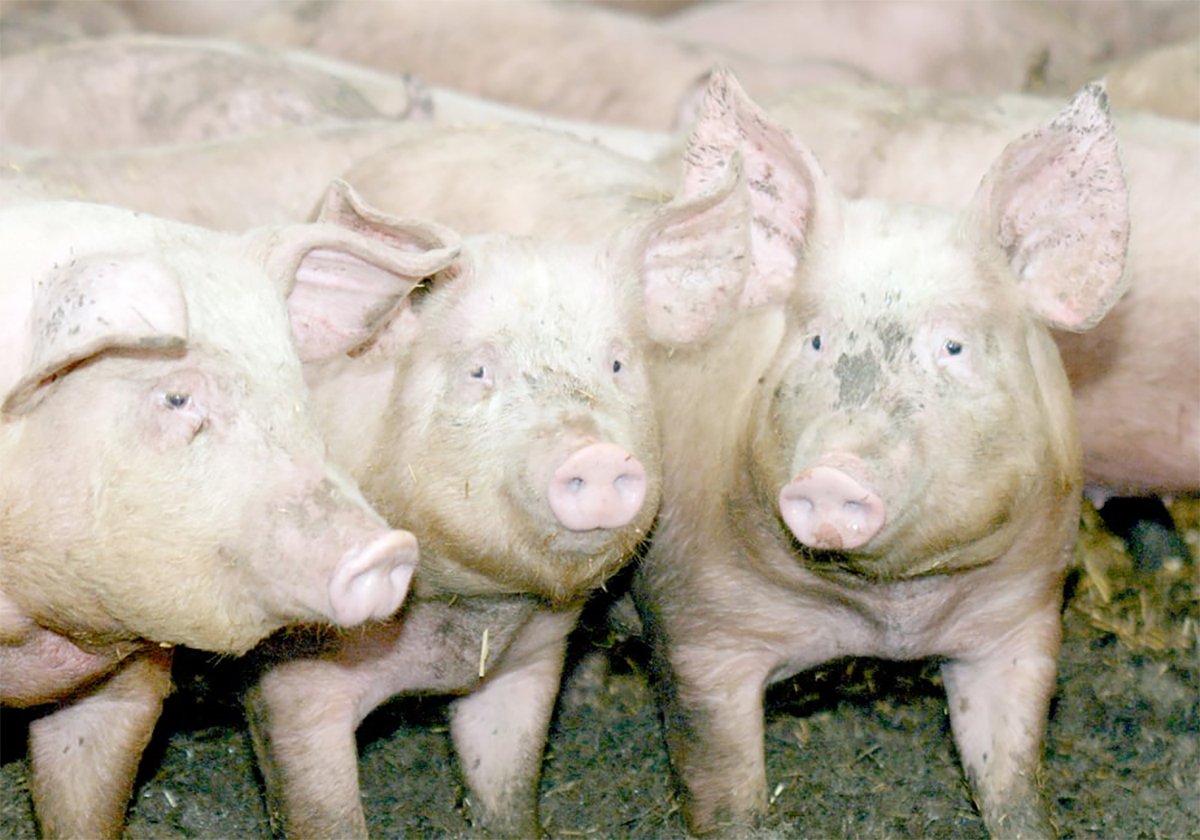RIMBEY, Alta. — Jan Slomp likes to tell people he is a lazy fellow.
He prefers to let his dairy cows harvest their own grass rather than spend time cutting hay for them.
“I’m not a cowman, I’m a grass man,” he told those touring his farm during the western forage beef group’s annual pasture school.
This dairy relies heavily on an intensive grazing program that is managed on a quarter section north of Rimbey.
Pastures are divided into small paddocks with electric fences and a tumble line that resembles a large spoked wheel without the rim. The line is rotated twice a day to move fences and guide the cattle onto fresh forage.
Read Also

The Western Producer Livestock Report – October 2, 2025
Western Producer Livestock Report for October 2, 2025. See U.S. & Canadian hog prices, Canadian bison & lamb market data and sale insight.
The grazed side is mowed down to nearly ground level; on the other side of the fence the grass is nearly knee high.
The greatest surge of pasture growth is in June. Management of that late spring growth determines the forage yield for the rest of the summer, as well as the stockpiled forages set aside for fall and winter.
High amounts of nitrogen fertilizer are applied before July 31. Manure is also part of the management plan. Slomp hopes to eventually cut out commercial nitrogen by introducing more legumes like clover.
He spreads about 100 kilograms of nitrogen per acre, which he considers an investment because it increases the available grass.
“I’d rather borrow money for fertilizer than land.”
Cost balance
On this kind of an operation, summer milk production declines somewhat compared to the winter when the cows receive more concentrated feed. The overall reduced cost for feed balances lower milk production.
“It’s the most profit for the lowest cost,” he said.
The level of grass production and its nutritional value is measured daily in the dairy’s milk output.
“If I didn’t do the right thing this morning, they’ll tell me tonight or tomorrow morning.”
Slomp raises a Holstein and Brown Swiss cross. To yield 9,000 kilograms of milk per cow per 305 day lactation, the nutritional demands are high.
For a cow to produce 30 kg of milk a day, she requires as much energy as a person running 10 triathlons in one day.
There is no blueprint on how to manage the grass and maintain high milk production. The big challenge is offering high quality, palatable grass. A lush stand of grass is no good if the cows refuse to eat it.
Meadow brome grass grows well but Slomp found the cows don’t like it as much as some other varieties.
As it matures, it becomes more coarse. He does not want more than 25 percent of this variety in the mix. His grass includes orchard grass, dandelions, clovers, fescue and Kentucky bluegrass. The cows prefer the bluegrass and fescue.
Overall, he finds a number of benefits in pasture-raised cows. The cows are healthier when they are outside grazing.
He also measured a noticeable increase in conjugated linoleic acid the day after they are turned out on grass. This is an essential fatty acid found in animal fat, meat and milk that protects against heart disease and some forms of cancer.
Drought management
Managing other aspects of the grass come with other challenges, particularly in a dry year like this.
Most years in central Alberta, rain is abundant and pastures are lush and green.
This year it is dry and the grass is already showing stress. This means more precise management and planning to ensure there is enough feed to last through to October.
Besides providing adequate feed, he wants some residue left behind in the pastures.
In a drought year, the residue is even more important because it helps hold moisture. If the cover is gone, the soil and pasture dehydrate within a matter of days, especially during a dry, windy spring.
Over time Slomp has built up a thick grass cover and root mass that acts as a filter. It can trap up to 100 millimetres of rain in a day with no runoff. This creates a reservoir to continue carrying the grass.

















